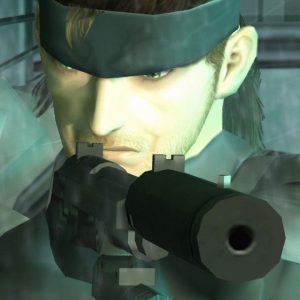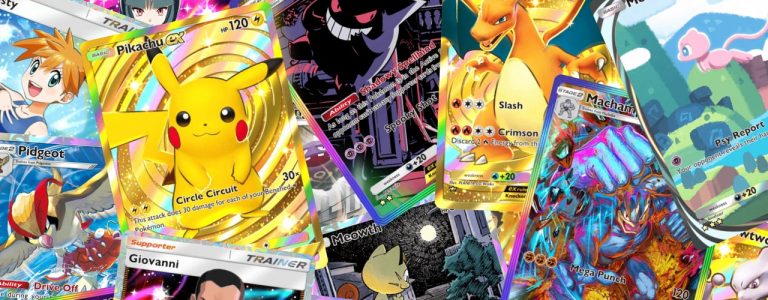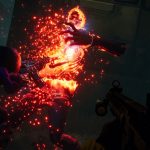The sixth round refines what makes this series stand apart.
After more than 20 years, five mainline games, and plenty of special editions and spinoffs, the Dead or Alive series of fighting games is very much a known quantity. Women (and some men) in suggestive costumes beat each other up and down in a fast-paced 3D fighter built on a basic but sound tactical framework. Dead or Alive 6 does not deviate from that top-level formula at all, but manages to spice things up with some interesting changes spread throughout its gameplay and modes. It’s polished, it’s fun, and it’s keeping the series alive and active without rocking the boat too much.
Viewed through that lens, Dead or Alive 6 deftly blends fresh and familiar to appease long-standing fans while offering an interesting array of single-player modes that serves as an onramp to competitive play online. Its single-player modes are predisposed to training you up past what you’ll learn by simply fighting AI opponents. Its storytelling, while not as expansive or novel as a Mortal Kombat or Injustice, gives its roster an essential sense of character. From determined tournament fighters in training to lovably foolish drunken masters and melodramatic ninja warriors and assassins, every contestant has a strong vibe and is itching to fight, which makes it easy and fun to hop in and wail on somebody.
The fundamental ideas behind Dead or Alive’s fighting remain largely, but not wholly untouched in Dead or Alive 6. The rock-paper-scissors-style “Triangle” parry system where strikes beat throws, throws beat holds (active blocks that turn momentum), and holds beat strikes remains in play. Holds, which involve predicting your enemy’s attack and hitting one of four counters just in time, make it very important to mix up your attacks and keep your opponent guessing. Like in past Dead or Alive games (and Tekken), you’re able to sidestep attacks in addition to crouching and retreating, which gives fights that 3D feel.
“
Dead or Alive 6 is very aggressive, even by fighting game standards.
Despite that defensively minded foundation, Dead or Alive 6 is very aggressive, even by fighting game standards. Short combos and environmental hazards like explosives make it easy to set up opportunities to juggle opponents and do a tremendous amount of damage. Whether you button mash or play tactically to take advantage of holds and throws, the best defense is a good offense. That said, this leads to situations where – especially against an experienced opponent who can string together long, juggling combos – a fight can feel even more one-sided than most fighting games. But Dead or Alive 6 throws you a lifeline to alleviate that feeling of being trapped with new moves that help you get out of those situations when you start to feel like a punching bag.
This new escape mechanics are the biggest and most helpful gameplay changes in Dead or Alive 6, and revolve around the fighters’ special bar, which is now called the Break Gauge. The two-tiered meter, as the name implies, regulates a set of attacks that can set up an assault or interrupt your opponent’s attacks, regardless of what they throw at you. You can spend some of it on a Break Hold, which (unlike a normal attack-specific hold) will counter any strike so long as you time it right and gives you a much better chance of getting out of a combo and shifting the momentum in your favor. Or you can spend your entire meter on a Break Blow attack, which works very much like the Power Blows that they replace from Dead or Alives past in that it interrupts any attack, cuts to a brief cinematic, and deals massive damage.
Dead or Alive 6’s distinctive new focus on breaking combos and/or preventing your attacks from getting broken feels like a good fit with the Triangle system and makes it easier to understand how these moves should fit into your strategy. For experienced fighters, the emphasis on disruption signals that Break moves have more utility than simply closing the gap when your opponent takes the lead or when finishing a fight (though they can definitely still help out in those ways).
“
Dead or Alive 6 goes to great lengths to get you ready to fight online.
In general, Dead or Alive 6 goes to great lengths to get you ready to fight online. In addition to three training modes — standard “free training,” character-specific command training, and combo challenges — the non-story single-player mode, DOA Quest, is a series of challenges that push you to learn and practice advanced moves and techniques to earn in-game currency and unlock extra costumes for characters. If you play a match in Quest and fail to complete a challenge, a prompt will appear in the menu giving you the option to see a tutorial on how to do a move or combo that will help you succeed the next time. Almost everything you do offline makes you better at fighting which, in turn, gets you ready for serious competition online.
All of these build on the foundation provided by one of the best opening tutorials for a fighting game I can remember using. In addition to the basics of helping you find your way around your controller, it really holds your hand and shows what you should be doing with big text and symbols, and even stops time at the right moment so you can see, for example, when you should press hold to counter an attack. Dead or Alive 6 is not an especially easy game to learn — there are combos, juggles, advanced moves — but the tutorial makes everything feel simple.
Story mode is the exception that proves the rule. Instead of a singular campaign, the fun and frivolous story plays out across of discrete, but often-related scenes. There’s a main story for the series’ stars, Ayame, Hayate, and Kasumi, which picks up after the equally wild events of Dead or Alive 5, and smaller sets of scenes for each member of the supporting cast. The structure, which strongly resembles SoulCalibur VI’s Soul Chronicle campaign, cuts up the plot into uneven pieces — there are a few story threads that run through them, but unlike Soul Chronicle it’s not written well enough that piecing them together feels smooth. The main storyline pivots rapidly from character to character, sometimes leaving nagging plot questions unanswered. There must be a better way to organize all of these scenes into a cohesive whole.
While the story never really gels, the individual scenes are effective as intense hits of worldbuilding. The best of them, which often feel random in the larger context of Dead or Alive 6, give their starring characters plenty of time to shine, cultivating a wider understanding of them and their relationships. In one of my favorite storylines, drunken master Brad Wong searches a crashed ship said to contain “legendary mystery wine,” fighting whoever gets in his way. It’s silly, fun and gives both Brad and his opponents time to vamp. Every story in Dead or Alive 6 is over the top, and some stories use that to greater effect than others, but it’s nice when the character you like to play most feels more well-rounded and realized. Especially since there are 24 characters to pick from out of the box, and all you initially have to go on is how they look.
DLC & MicrotransactionsPublisher Koei Tecmo’s post-release content plans for Dead or Alive 6 hew mostly to standard practice among fighting games. There are two extra characters available as day-one DLC: if you preordered or buy before March 31, 2019 you get Nyotengu and an alternate Kasumi (PS4 and PC) or Hayabusa (Xbox) costume, and if you purchase the $79.99 Digital Deluxe Edition you add Phase 4 to your roster. Both are returning characters, but neither adds much fanfare: Phase 4, who has traditionally been a clone of Kasumi, seems like a particularly dull draw, though the Deluxe package also comes with 26 extra costumes and three new in-game music tracks. The crazy part is that Koei Tecmo is selling a ludicrously priced $93 season pass that promises to add only two more characters, one of which has been announced as King of Fighters’ Mai Shiranui, and 62 costumes. Costumes are nice and all, but two extra characters feels a little light for a season pass when most fighting games release characters in packs of four or five. Even if it were just as bountiful as most, it’s hard to justify the price tag. It seems like an unwise purchase, especially since we’re told up front that this content will all be available separately at a later date at which point you’ll be able to pick and choose the costumes for characters you actually play. But considering the free-to-play version of Dead or Alive 5 currently offers more than $1,200 worth of extra characters and costumes, we can expect to see a lot more wildly overpriced DLC where this came from. |
Despite the fact that director Yohei Shimbori told IGN that Dead or Alive 6’s characters would feature less suggestive character designs, the traditional flagrant, jiggling sexuality is still very much on display. Though not every woman has a gigantic bustline and many have default costumes that show less cleavage than Kasumi’s standard outfit (which appears to be a child-sized dress stretched onto an adult woman) they’re still clearly designed to entice and titillate, often showing flashes of underwear on high kicks. And those are just the sanitized version: almost every character has a more revealing alternate outfit (or many of them – there’s a generous amount here to be unlocked) if you want to see them more provocatively dressed.
“
The traditional flagrant, jiggling sexuality is still very much on display.
In the story and other single-player modes your opponents wear many different costumes, including some of the more revealing options. In multiplayer, of course, what your opponent wears falls to their discretion (or lack thereof). On top of that, the progression makes the skimpiest outfits some of the hardest to earn, so playing with a revealing skin not only becomes a statement of preference but a badge of honor. It’s a disappointingly half-hearted effort to make Dead or Alive 6 palatable to both its long-time audience who enjoys its blend of sex and violence and those of us who’d prefer to not have to hide the screen when others walk into the room.
Given that, it’s strange that Dead or Alive 6 doesn’t fully embrace its crassness, either. It’s surprisingly lacking in features I expected would be no-brainers for a game whose progression and appeal include “admiring” characters and costume items you’ve unlocked. While it has a wardrobe mode where you unlock costumes and set outfit preferences, and you can use the light photo mode to pause and view characters during a spectator match, there is no model viewer to let you examine the outfits you’ve unlocked. Destiny 2 lets you look at every rivet in every piece of gear that drops; why shouldn’t Dead or Alive 6 do the same?
Multiplayer
Unfortunately, the multiplayer options and infrastructure for Dead or Alive 6 are coming in hot, and without the promised lobby mode for unranked online play. Unranked lobby matches are coming “later in March,” but as of now there is only one type of online play, which seems light even for a no-frills online setup.
Also, after playing a couple of hours of ranked matches, I found the stability of online play to be a bit… finicky. Dead or Alive 6 generally runs smooth when both players have top-rated connections, but when either you or your opponent experience even small dips it can cause significant stuttering or slowdown that I don’t see in comparable fighting games. I never had a game crash or timeout, but it’s definitely not pleasant when you’re trying to build your rank.
As always, these issues may very well get worked out in the coming weeks, but at launch, you should prepare rough online seas. That’s disappointing since, as with just about every fighting game, getting out there and playing online is what Dead or Alive 6 is all about.
The Verdict
Dead or Alive 6 makes a strong case for the franchise’s fundamental combat by making it easier to understand what sets it apart from other fighters, other than its infamous “jiggle physics.” The story campaign is disjointed but it and the other training modes serve as effective instruction for getting new players up to speed for online combat quickly, and the new Break Hold and Break Blow moves give you a way out even when you seem locked into an endless juggle of doom. It really needs to work on its online multiplayer options, though, since they’re currently skimpier than La Mariposa’s outfit.
























